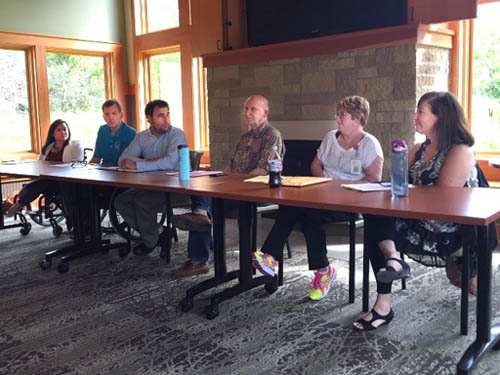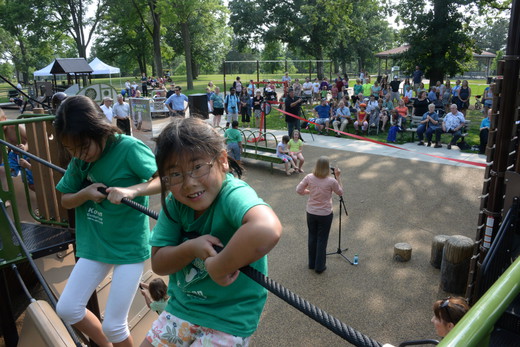People with disabilities, advocates share ideas for regional parks planning
The outcome of equity, as put forward in Thrive MSP 2040, means all residents and communities are involved as full and equal partners in public decision-making. To that end, the Metropolitan Council is helping build the capacity of our partner agencies and communities to engage underrepresented groups and communities in planning.
 One example of this effort is the quarterly convening for Regional Parks System Community Engagement Best Practices hosted by the Council’s Regional Parks unit. Planners and other staff from 10 regional park agencies attend these events, which offer participants opportunities to learn and share effective and appropriate community engagement practices.
One example of this effort is the quarterly convening for Regional Parks System Community Engagement Best Practices hosted by the Council’s Regional Parks unit. Planners and other staff from 10 regional park agencies attend these events, which offer participants opportunities to learn and share effective and appropriate community engagement practices.
The most recent convening was held at Lake Elmo Park Reserve in July. It featured a panel of experts who addressed how to how to make the parks more accessible to residents who have physical, congenital, or mental disabilities, and how to engage them in parks planning.
Park destinations need a street address
For starters, park destinations need to have a physical street address, said Stacy Shamblott, program coordinator from the Courage Kenny Rehabilitation Institute. Otherwise, Metro Mobility cannot drop a customer off to that location, she said.
Luka Krmpotich, a skateboarder and Wilderness Inquiry volunteer who has a visual disability, spoke to the need for signage to be in high contrast colors and in a format that enables persons with low-vision to see.
What many public buildings feature as accessible bathroom stalls are not truly accessible for persons who use certain types of motorized wheelchairs, said Cindy Tarshish, ADA Minnesota Program Manager. She emphasized that the ADA requirements are the minimum and that organizations should aim higher than that.
Universal design means built environments can be used by everyone
Mai Thor, an outreach coordinator from the Met Council, stressed the concept of universal design.
“Planners should incorporate universal design principles for built environments from the very beginning so that everyone can have access regardless of disability,” Thor said. “It often happens that universal design concepts are overlooked and then the buildings have to be tweaked later, at greater expense, to make them more accessible.”
Craig Dunn, executive director for VSA Minnesota, spoke to the resources that are available from the State Arts Board and the State’s Legacy funds to expand accessibility in the regional parks.
 “Hire artists who have disabilities; they have audiences who will go see them,” Dunn said. “This is a great way to attract new audiences into your parks.”
“Hire artists who have disabilities; they have audiences who will go see them,” Dunn said. “This is a great way to attract new audiences into your parks.”
Todd Kemery, the advocacy director for Minnesota Paralyzed Veterans of America, had several recommendations on how to serve former members of the U.S. Armed Forces who have suffered catastrophic paralysis as a result of spinal cord injury or disease. “Call me, I am a resource for you,” he told audience members.
Participants at the convening also watched a humorous video, “There’s No Need to be Awkward,” which offered suggestions on how to treat people with disabilities.
“[These are] eye-opening sessions,” said Karen Blaska, parks planner for Anoka County. “Every park and recreation-related practitioner should participate.”
A considerable amount of groundwork is needed to successfully implement this type of event, said Claudia Fuentes, outreach coordinator for the Met Council. For months prior to a convening, Council outreach staff collaborate with parks planning staff to explore what sorts of resources would be most helpful to them. Of primary importance to planners was identifying key informants, or community leaders, who could impart knowledge and strategies on how best to connect with the communities they represent and serve.
One-on-one conversations with key informants early on is vital, Fuentes said. Establishing a connection and an understanding on common goals is necessary before any engagement activities can even be planned.
These practices help public sector staff to foster the relationships that lead to productive dialogue and build capacity to learn effective community engagement approaches. Patience and persistence will eventually lead to reaching diverse audiences and ensuring that the outcomes of our planning efforts directly benefit those who are currently underserved, Fuentes said.